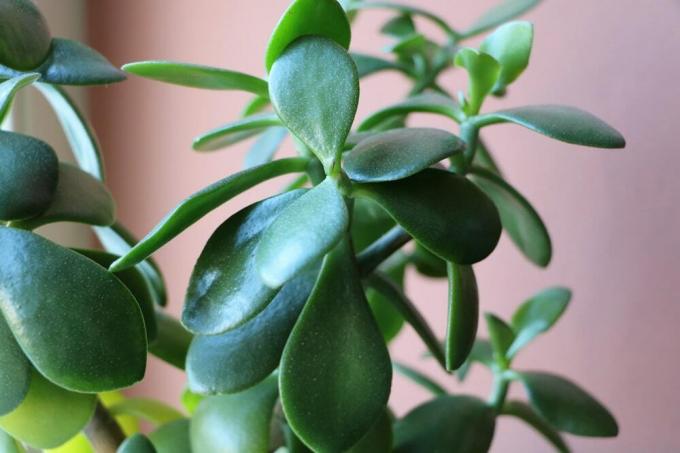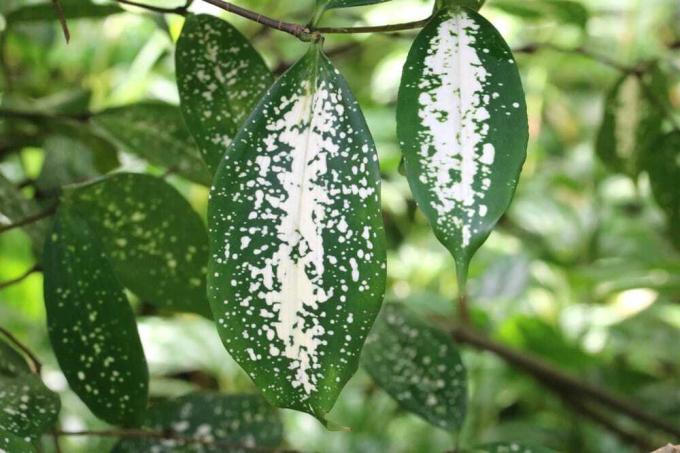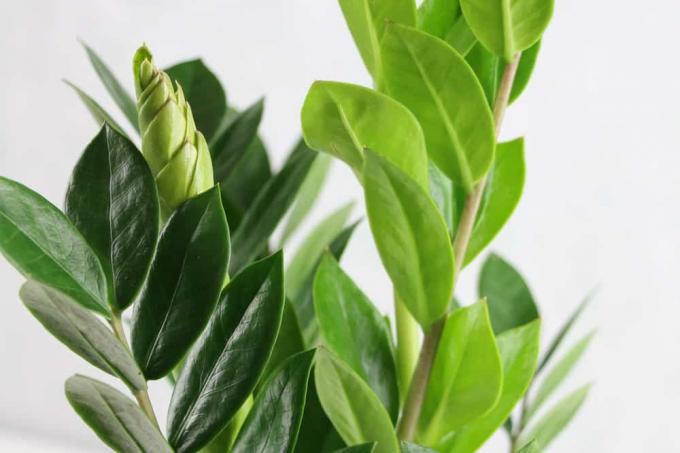

Table of contents
- The ideal cutting tool
- The right cutting technique
- need cut
- Tapered cut
- Shaping cut
- Breed high stem
- shaping bonsai
- radical cut
Although the money tree does not produce any banknotes, the plant is one of the most popular indoor plants. This is due to the hardy characteristics of this plant, which requires little maintenance and can grow up to 2.5 meters tall. Cutting measures are usually not necessary. But they support plant growth and create unique shapes that deviate from the shrub-like archetype.
The ideal cutting tool
The penny tree is one of the thick-leaf plants that develop succulent shoots. These only lignify at a later age. Scissors should not be used for the cutting measures, as they cause bruises. The interface tends to bleed, greatly weakening the plant. Injuries to the plant tissue result in brown spots that look ugly. Therefore, use a sharp knife to get a clean cut without injury. Disinfecting the blade is important to reduce the risk of disease:
- Immersion bath in high-proof alcohol
- ten-minute bath in boiling water
- spray with disinfectant
The right cutting technique
A money tree can be pruned in different ways, whereby you can combine different techniques. The first cut characterizes the later growth habit. Since Crassula ovata is very well tolerated by cutting, you can cut annoying shoots all year round if necessary or shape the plant. With a generous and one-off annual cut before the new growth phase, you save the exotic plant a lot of stress. She can put her energy into developing fresh shoots during the summer.
need cut
If leaves wither or shoots look unattractive, you can cut them back as you wish. This also applies to withered flowers that the baobab tree develops in summer when it is outdoors. However, there is no need. If the thick-leafed plant suffers from diseases or pests, the affected parts of the plant should be removed in good time. In the case of severely infested plants, the only thing that usually helps is a radical cut.
Tapered cut
Even if the baobab tree gets optimal care and the site conditions are good, older specimens in particular only sparsely develop leaves. Overall, the plants appear bare or the inside of the crown thins out, since the leaves hardly get any light here. A rejuvenating pruning revitalizes the plant and gives it new vitality. It can branch out again and the nutrient supply works better again in fresh shoots. The light can penetrate back to the main stem and promote leaf growth. All in all, regular pruning makes the plant more robust and less sensitive to diseases and pests. How to proceed with the rejuvenation cut:
- Cut old branches down to the base of the trunk
- Shorten light branches by a third
- at least two pairs of leaves should remain on the shoots
- Completely remove dried, discolored or diseased shoots
Shaping cut

This measure is suitable for you if you want to get your penny tree in a certain shape or keep it. It can also be used when the plant is growing unevenly due to a suboptimal location. If only half of the sun shines on it and it is never rotated, it will grow on one side. Position the cutting tool in such a way that the branch is not left completely bare. If a cut back shoot is to branch, it needs a few pairs of leaves. Education cuts look like this:
- upright growth: Cut all side shoots in half
- broad growth: Shorten the trunk by a third and cut off branches at the top
- compact form: Cut off hanging branches three centimeters before the bend
- even shape: Shorten the branches of the denser side to the branch length of the weaker half
Tip:
Hanging branches from old specimens can also be tied up with a rope. After some time, they automatically grow upwards.
Breed high stem
A money tree naturally forms strongly branched and shrub-like shoots. In order for the plant to resemble a small tree that develops a dense crown, you need to carry out regular pruning measures. Young plants that are one to two years old are well suited for this training because older plants have already developed woody stems. Select the sturdiest trunk and remove leaves and shoots in the lower area up to the height at which the crown should start. As soon as new shoots appear in this trunk section, remove them. Cut the shoot tips in the crown area so that the shoots branch out. Support the trunk with a stick until the plant can support its crown on its own.
shaping bonsai
The baobab tree offers an ideal introduction to learning the art of bonsai design. He is frugal and forgives you wrong cutting measures. By cutting regularly, you can determine the exact shape of the mini tree. A young head cutting is ideal for this project. Along the main trunk, remove the side shoots that are not used for crown formation. The shoots of the crown are shortened. Pay attention to a harmonious form. Disturbing shoots are completely removed as soon as they appear. As soon as the crown branches carry more than ten pairs of leaves, they are shortened.
Tip:
To get an upright bonsai, tie up the shoots. Curved shapes can be designed with a wire.
radical cut
If your penny tree has been attacked by pests or diseases so that its vigor is severely impaired, you should think about a radical pruning. Even if you are worried about this measure, Crassula ovata can cope with an intensive cut without any problems. The measure stimulates the metabolism so that your money tree recovers more quickly from the consequences of an illness or a pest infestation. The plant forms new shoots in the same year. With good care and optimal site conditions, the tree will have completely revitalized itself after just three years and will grow with renewed vigour. Proceed as follows:
- Cut all branches to within one to two centimeters before branching
- if the trunk is damaged, shorten it to just above the second side shoot
- larger trees can be topped to within a hand's breadth of the substrate
 garden editorial
garden editorial I write about everything that interests me in my garden.
Learn more about indoor plant dictionary

Ornamental asparagus, Asparagus densiflorus: Care from A - Z
Ornamental asparagus is a popular decoration for the garden or balcony. The following guide with tips for care from A to Z shows how Asparagus densiflorus and other species of the plant such as Asparagus plumosus or Asparagus sprengeri can be cultivated.

Easy-care office plants - 18 plants for the office
If you have the opportunity to make your office a little more personal, you often use office plants because they have several good properties. You can find out which indoor plants are suitable here.

20 plants for children's rooms: non-toxic and easy to care for
Decorative plants are part of the design of the children's room. Plants in their own room give the offspring a comprehensive insight into the care of the plants, even if they are easy to care for. It is important when choosing plants that you choose non-toxic species.

Dragon Tree, Dracaena surculosa: Care A – Z
Dracaena surculosa is a species of dragon tree popular for its fresh green and brightly mottled leaves. In contrast to the typical dragon tree, this one is more reminiscent of a bamboo because of its thin, branched stalks. But that is exactly what makes it so decorative.

10 useful indoor plants for a healthy indoor climate
Indoor plants transform a room into an oasis of well-being. They are decorative and healthy at the same time. They help to improve the room climate by reducing the concentration of carbon dioxide, optimizing the air humidity and binding pollutants from furniture and carpets. Which houseplants are recommended?

Is the lucky feather / Zamioculcas poisonous? Advice for children and cats
The lucky feather is popular because it just keeps growing without much attention. This houseplant, which comes from Africa, develops so beautifully that everyone would like to have it. But one thing to note: it is mildly toxic.
